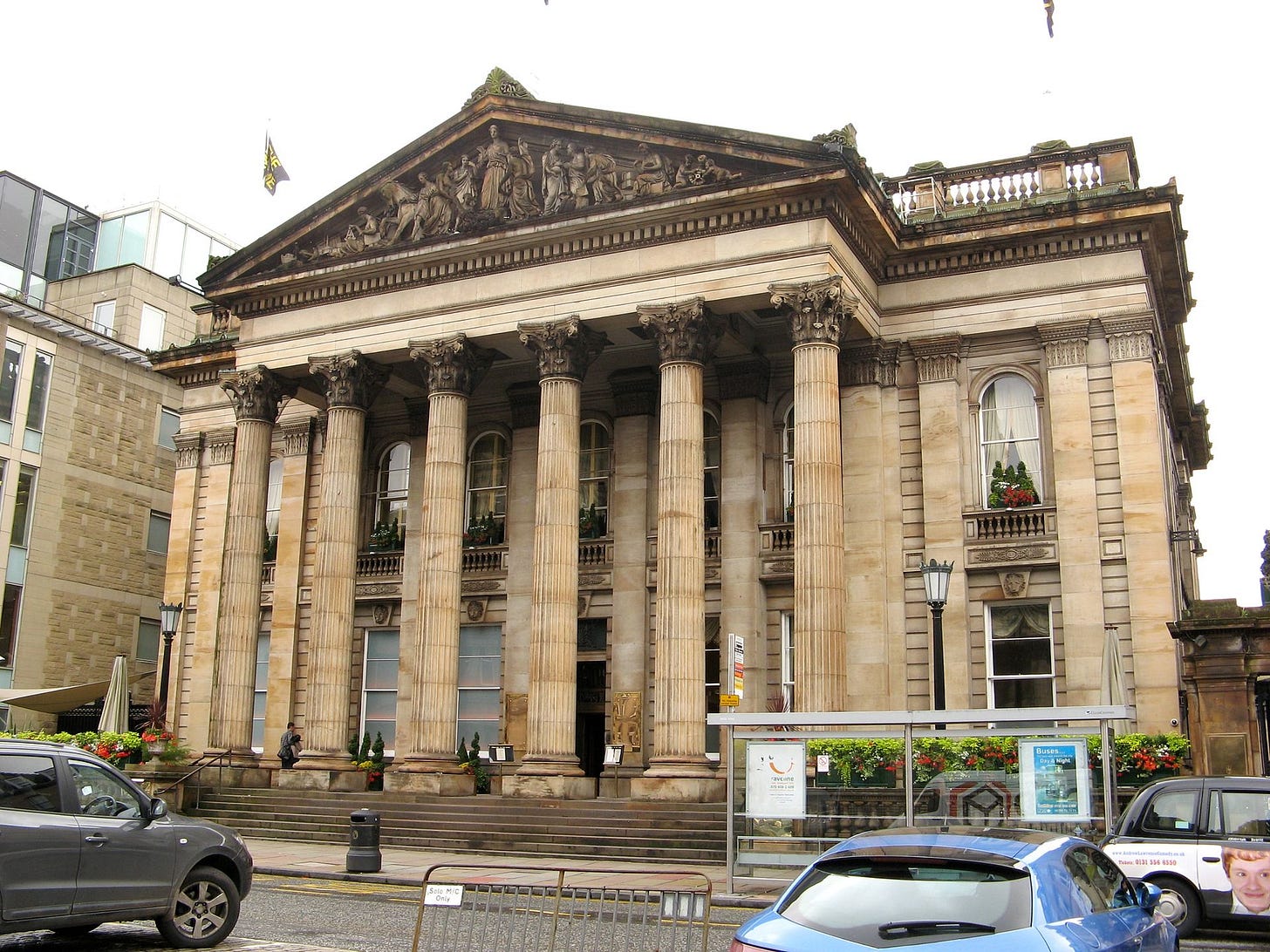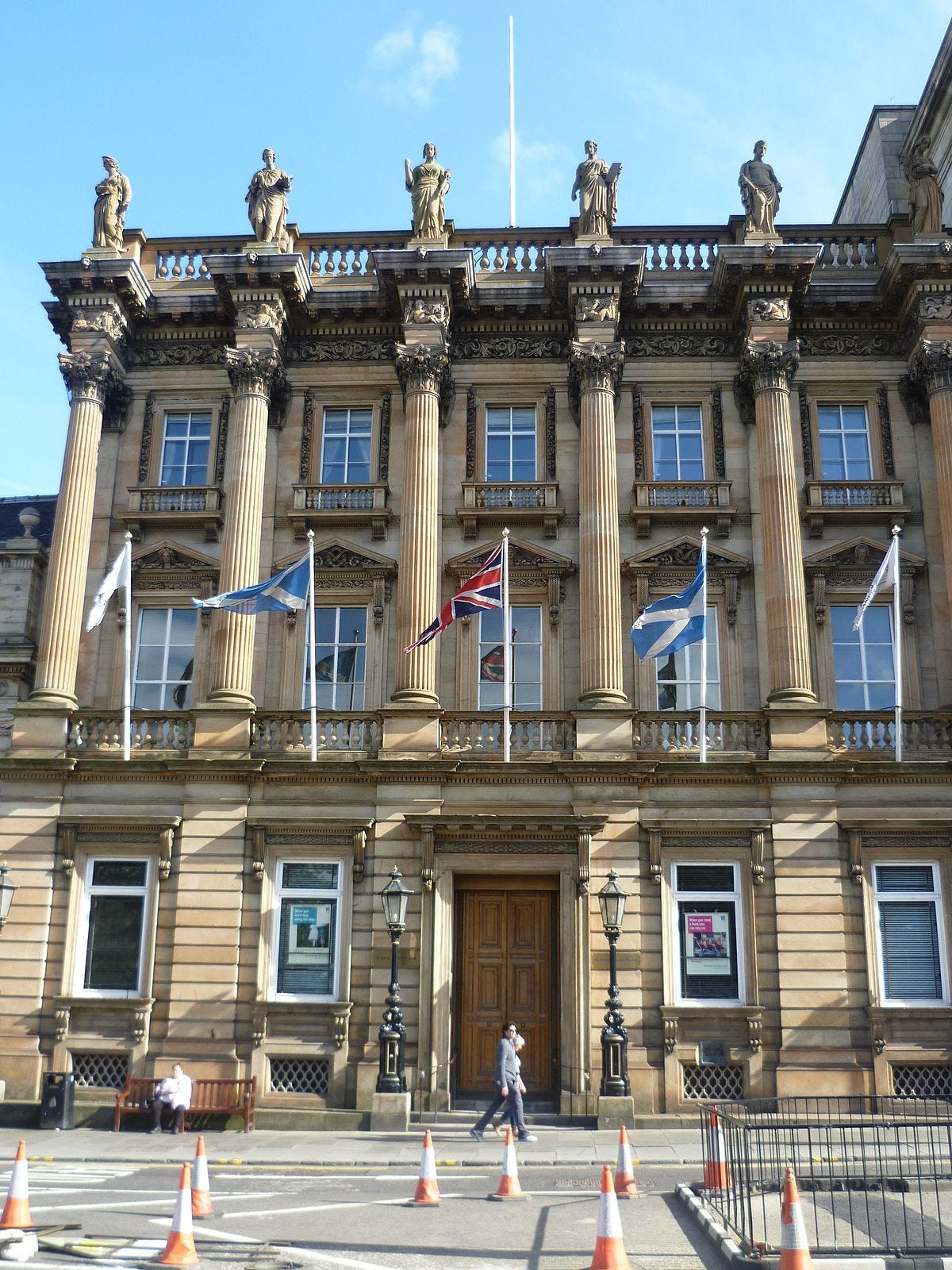Trust, bank notes, and beautiful buildings
Short post today with a disclaimer: it’s heavy on architectural nerdiness.
A little update related to the couple of weeks that The Vertical Sidewalk has been in hiatus: I’ve been working in two very exciting projects, related to Storefronts and coaching local organizations, small developers and businesses to create great experiences for their customers.
If you’re interested in those, you can follow me on Twitter to get updates on Storefront Mastery’s work with communities and small businesses.
Onward with the post.
There is a quote that is oftentimes attributed to Winston Churchill: “We shape our buildings and therefore they shape us”. I’ve seen it in different form, credited to other people, but the core stands: culture creates the built environment to preserve its values.
A core value of Scottish culture was freedom. No, not necessarily the blue-faced, spear-wielding, William Wallace kind but a liberal, free-thinking, all encompassing attitude towards arts, sciences and philosophy that spawned what we know as the “Scottish Enlightenment”.
Of a different nature than the French one, the Scots’ was founded on understanding human nature and its flaws, and the influence it had over pretty much every area of human action: aesthetics, law, trade and culture, among others.
Those familiar with Classical architecture will recognize Robert Adam as a leading figure of the time.
I said this would be short so to the point: the economy was, of course, one of the areas that the Scots developed well, with renowned thinkers such as David Hume and Adam Smith.
Trade enjoyed a boost after the union with England. The ideas of the Enlightenment allowed Scotland to reap the success of the expanded trade and create a lot of wealth.
Scottish banks became key links in the economic chain and supported much of the enrichment process. They were trusted institutions that issued their own bank notes. These were widely accepted on the basis of the trust of the banking institution.
But then came the central bankers. in 1844, the Bank Charter Act centralized the currency in the Central Bank of England and revoked the right of banks to issue their notes.
It must have been a new thing for them to be dependent on centralized decisions after centuries of doing business locally.
The thing is that I found an interesting coincidence on the aftermath of the Bank Charter Act of 1844 and the emergence of beautiful, massive, solid bank buildings that set the tone for most future structures of the type.
Below are the Caledonian Bank of 1847, the Commercial Bank of Scotland of 1847 and the British Linen Bank of 1851. All erected within few years after one of the main instruments of trust in banks was taken.
Was the creation of symbols of wealth and trust a marketing move to signal trustworthiness after a shock that took a big chunk of control away from local institutions?
Was it a spite response to legislators in a foreign land making decisions that should be local?
Either way, we shape our cities and therefore our cities shape us.






